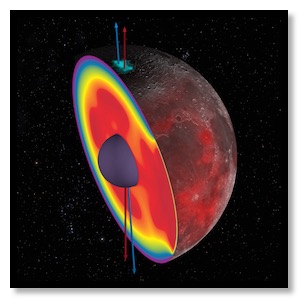Rotational stability of planets
22/07/21 14:19

The spin axis orientation of planetary bodies can change due to a variety of processes such as internal convection, glaciation or impacts. Mass redistribution associated with these processes perturbs the inertia tensor of the planet, forcing it to reorient to a new minimum rotational energy state. This reorientation is commonly referred to as true polar wander (TPW) and manifestations of it provide constraints on the interior structure of planetary bodies. Despite their diversity, many solar system bodies appear to have undergone reorientation, underlying the universality of the physical processes driving TPW. I have developed new theoretical treatments for investigating TPW that take into account a suite of previously ignored driving mechanisms. These theoretical formulations are sufficiently general to provide the foundation of any future study of TPW and I have led in their application to a diverse set of planetary studies. Image credit: James Keane.
Relevant publications:
- Matsuyama, I., Nimmo, F., & Mitrovica, J. X. (2014). Planetary Reorientation. Annual Review of Earth and Planetary Sciences, 42, 605–634. http://doi.org/10.1146/annurev-earth-060313-054724
- Bouley, S., Baratoux, D., Matsuyama, I., Forget, F., Séjourné, A., Turbet, M., & Costard, F. (2016). Late Tharsis formation and implications for early Mars. Nature, 531, 344–347. http://doi.org/10.1038/nature17171
- Siegler, M. A., Miller, R. S., Keane, J. T., Laneuville, M., Paige, D. A., Matsuyama, I., et al. (2016). Lunar true polar wander inferred from polar hydrogen. Nature, 531, 480–484. http://doi.org/10.1038/nature17166
